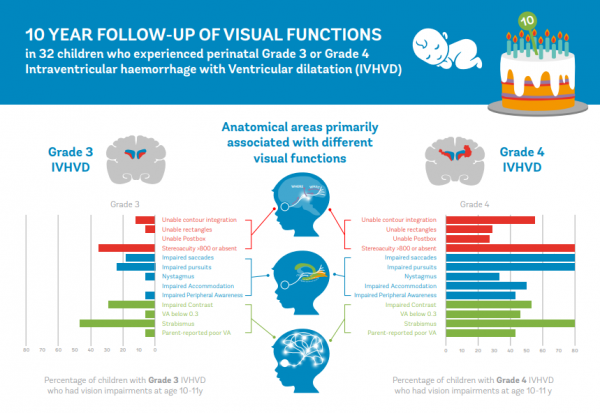 Newswise — Severe “brain bleeds” experienced by some babies in the first year following their birth lead to long-term sight problems, researchers at the University of Bristol, UKhave found as part of a ten-year follow-up study.
Newswise — Severe “brain bleeds” experienced by some babies in the first year following their birth lead to long-term sight problems, researchers at the University of Bristol, UKhave found as part of a ten-year follow-up study.
The study, published in the journal Developmental Medicine & Child Neurology today [23 June], reviewed 32 children who had detailed assessments at 10- to 11-years-old after experiencing Grades 3 or 4 intraventricular haemorrhage (brain bleeds) and ventricular dilation (IVHVD) as part of a study called DRIFT10.
The DRIFT10 study was set up to investigate a ‘brain washing’ technique for brain bleeds called DRIFT (Drainage, Irrigation and Fibrinolytic Therapy). DRIFT, pioneered by Bristol researchers, is the first and only treatment to objectively benefit infants with serious brain haemorrhage by washing out the ventricles in the brain to remove toxic fluid and reduce pressure.
The research team reviewed 32 children aged 10- to 11-years-old. They investigated whether the Grade of IVHVD experienced as babies affected their visual outcome at the end of their primary school years and explored associations between visual outcomes with cognitive outcomes and with extra support at school.
The visual examinations were part of a ten-year follow-up study for children in the original DRIFT randomised trial. Testers followed a protocol, and it was unknown to them whether the child had experienced Grade 3 or Grade 4 IVHVD and all other data.
The study found all 32 children assessed had at least one visual impairment. The average number of impairments per child was six for children who experienced a Grade 4 IVHVD compared to three for children who experienced a Grade 3 IVHVD. Each extra vision impairment for each child was associated with increased educational support at school, after adjustment for developmental age equivalence.






